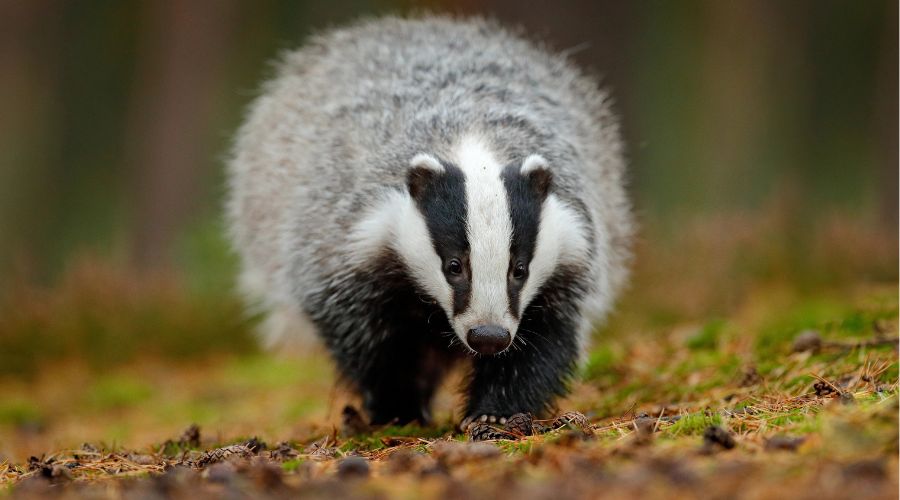Badger cull will end, government announces
30th August 2024
Defra has released plans for a new TB eradication strategy, moving away from the decade-long badger cull.

The government is introducing a new bovine TB eradication strategy to end the badger cull, which began in 2013.
The news comes shortly after Brian May’s controversial documentary which argued that bovine TB could be tackled without badger culling.
Farming organisations and scientists have criticised the programme for missing out peer reviewed evidence and focusing on one farm’s example.
The government has said the work to end the badger cull starts ‘immediately’ and includes:
- Badger population survey: A new survey will launch this winter to estimate badger abundance and population recovery, to shed light on the impact of widespread culling over the past decade
- New national wildlife surveillance programme: The aim is to provide an up-to-date understanding of disease in badgers and other wildlife such as deer. This will inform how and where TB vaccines and other eradication measures are deployed
- Establish a Badger Vaccinator Field Force: This will increase badger vaccination at pace
- Badger vaccination study: To supplement the Field Force, the government will rapidly analyse the effect of badger vaccination on the incidence of TB in cattle.
The government plans to end the badger cull by the end of this parliament.
Prior to election the Labour Party branded the cull ‘ineffective’ but has said it will maintain existing cull licences.
Further measures to tackle bTB
Meanwhile, the government has pledged to accelerate work on the development of a cattle vaccine. The next stage of field trials will commence in the coming months.
It’s hoped an effective cattle TB vaccine could be available within the next few years.
A range of further measures will be considered including boosting cattle testing, reducing the spread of disease through cattle movements, and deploying badger vaccination on a wider, landscape scale.
The full strategy will be co-designed with farmers, vets, scientists and conservationists, Defra said.
Over the past decade, more than 278,000 cattle have been compulsorily slaughtered and over 230,000 badgers have been culled in efforts to control the disease.
READ MORE: Calls for evidence-based discussion about TB raised amid release of Brian May documentary
READ MORE: Bovine TB vaccine trials “a major step forward”
READ MORE: Clarkson’s Farm sparks debate on bovine TB and badger culling
“Refreshed strategy”
Farming minister Daniel Zeichner commented: “Bovine tuberculosis has devastated British farmers and wildlife for far too long.
“It has placed dreadful hardship and stress on farmers who continue to suffer the loss of valued herds and has taken a terrible toll on our badger populations.
“No more. Our comprehensive TB eradication package will allow us to end the badger cull by the end of this parliament and stop the spread of this horrific disease.”
Chief veterinary officer Christine Middlemiss added:
“Bovine tuberculosis is one of the most difficult and prolonged animal disease challenges we face, causing devastation for farming communities.
“There is no single way to combat it, and a refreshed strategy will continue to be led by the very best scientific and epidemiological evidence.
“With the disease on a downward trajectory, we are at a crucial point.
“Working in collaboration with government and stakeholders will be the only way we achieve our target to eradicate bovine tuberculosis in England by 2038.”
The government will also publish additional information about animal and herd-level bTB risk. This includes the date and type of the most recent TB test completed in the herd of origin of that animal and how long the animal has been in the herd.
This greater level of detail will be made available on ibTB – a free to access interactive map set up to help cattle farmers and their vets understand the level of bovine TB in their area and manage the risks when purchasing cattle.
Concerns over inaccuracies
In the wake of the Brian May documentary, ‘Brian May: The Farmers, the Badgers, and Me’, a number of farming and veterinary organisations raised concerns about inaccuracies and biases.
The programme largely focuses on improved hygiene measures implemented at Gatcombe Farm to tackle bovine TB.
NFU and AHDB have since said they will make an official complaint to the BBC.
Meanwhile the British Cattle Veterinary Association flagged several inaccuracies and biases, including:
- Newer evidence was missed out of the documentary, such as Downs (2019) and Birch (2024), which both show significant reductions in bovine TB in licensed cull areas since the start of the cull
- Claims that the bTB skin test has a sensitivity of 50% are incorrect. Skin test sensitivity actually ranges between 50-80% with an average of 80% in England
- It was implied during the programme that badgers do not play a part in bTB. Published evidence shows that badgers do transmit TB to cattle
- There was a claim in the programme that badgers culled did not have TB, but it is difficult to confirm that badgers culled during the badger control policy did not have TB
- Cattle were identified as shedding M.bovis bacteria in their faeces. The faecal PCR used to determine this is not a validated test and as such care should be taken when interpreting results
- The programme claimed bTB in Devon is static and has plateaued, but data shows a decrease of 8.7% since the 12 months up to March 2023.
Bovine TB can have a devastating effect on farmers’ mental health, prompting NFU to urge those who are struggling to reach out for help.
Read more livestock news.


